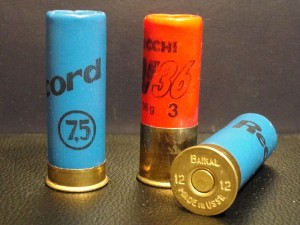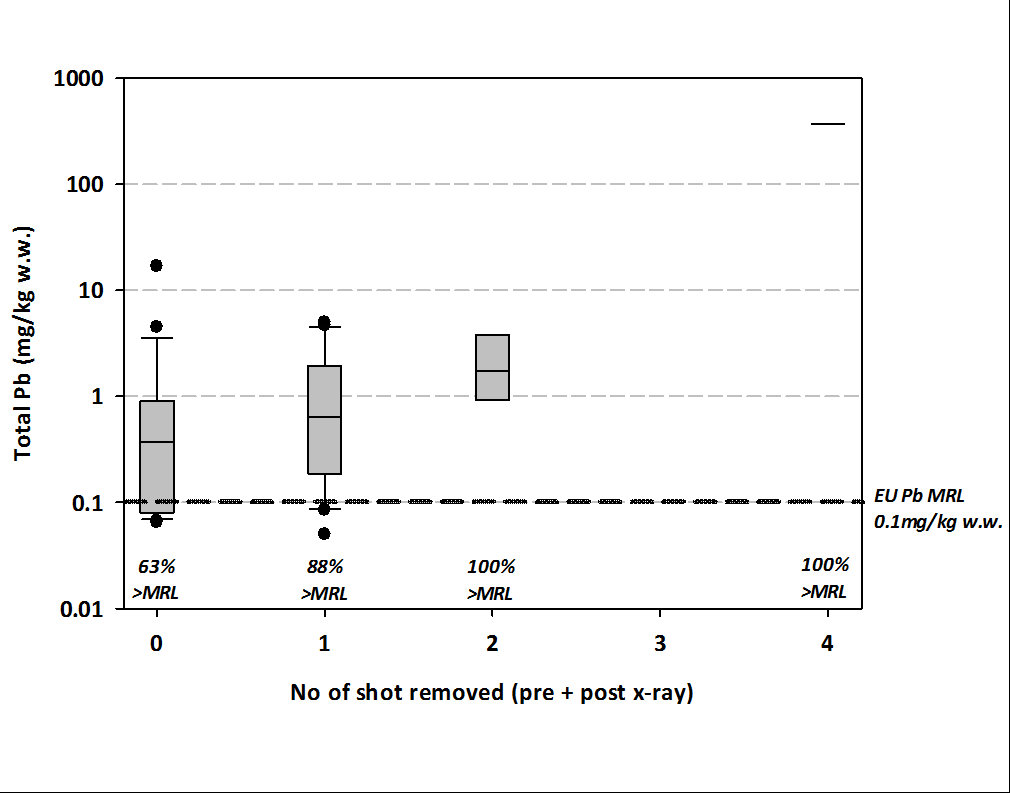 Following my blog of this morning about the appointment of Heather Hancock as Chair of the FSA I’ve received a communication from the FSA – in response to questions I posed to them when their Board meeting was broadcast live on the internet in late January.
Following my blog of this morning about the appointment of Heather Hancock as Chair of the FSA I’ve received a communication from the FSA – in response to questions I posed to them when their Board meeting was broadcast live on the internet in late January.
Although their response is not a complete answer to all the questions posed, it is very useful and certainly shows that BASC have been getting the science wrong – let’s be generous and call it a mistake.
I reproduce it here in full. I have highlighted some interesting bits – but it is all interesting:
Dear Mark
Thank you for your questions received via social media relating to the health risks of game meat shot with lead.
There is no agreed safe level for lead intake. Independent scientific expert groups across the European Union advise that exposure to lead should be reduced as far as possible.
The EU maximum level of 0,10 mg/kg for lead in meat (excluding offal) of bovine animals, sheep, pig and poultry (Commission Regulation 1881/2006 as amended) does not apply for lead in grouse or other game meats.
The Lead in Food Regulations 1979 did contain a maximum permitted limit for lead in game of 10 mg/kg (excluding discrete particles of shot), but these regulations were revoked by the Contaminants in Food (England) Regulations 2002.
Maximum limits for lead in game have been considered in discussions at the EU Commission expert committee on industrial and environmental contaminants. It was agreed by all Member States and the Commission that due to the very variable nature of lead levels in game shot with lead, that consumer advice would be a more effective risk management measure.
Prior to these discussions, a FSA 2012 risk assessment identified that lead shot game is unlikely to be a significant source of exposure for the majority of consumers who never or only occasionally consume game; but it may be a significant, additional and avoidable contributor for frequent consumers.
The Food Standards Agency subsequently published advice in 2012 stating that frequent consumers of lead-shot game should eat less of this type of meat. Eating lead-shot game on a frequent basis can expose consumers to potentially harmful levels of lead.
To minimise the risk of lead intake, people who frequently eat lead-shot game, particularly small game, should cut down their consumption. This is especially important for vulnerable groups such as toddlers and children, pregnant women and women trying for a baby, as exposure to lead can harm the developing brain and nervous system.
The FSA risk assessment concluded that consumption of two game bird meals every week throughout the year would increase the dietary exposure to lead by up to 8 times for an adult and up to 5 times for a toddler. These are conservative estimates, assuming visible lead shot is not removed.
The Lead Ammunition Group was set up to advise the Government on human health and environmental impacts of the use of lead ammunition and provided its final report to Government last year. The FSA is reviewing the report and as part of this has sought review from the Committee on Toxicity. As part of this review, the FSA is also considering the output of the Oxford Lead Symposium.
We are aware that the EU Commission will ask the European Chemicals Agency (ECHA) to gather information in 2016 regarding the potential risks presented by lead ammunition. UK Government will be fully engaged in this process
The FSA is interested in the information presented on your blog identifying levels of lead in game on sale in a UK supermarket. The mean level as reported is higher than that used in our risk assessment of 2012 and higher than expected for red grouse when compared to other published data. We will be discussing with the British Retail Consortium and relevant supermarkets what controls they have in place to minimise lead in these products. We would ask that any new available data on the levels of lead in game be submitted to:
Yours sincerely,
Fascinating. I’ll come back to this, later.
[registration_form]
In the light of figures published by the grouse shooting industry of the total hours worked and total age bill, suggesting that some of its workers are being paid less than minimum wage, and in the light of the information posted here, is it not a matter of urgency to find out how much of the shortfall in wages is being made up in grouse meat, and how often the industry’s workers are eating grouse meat ?
Given that there is “no agreed safe level for lead intake” and that there is plenty of evidence to suggest that adding any extra lead into the environment is a bad thing, isn’t it time to move away from the narrow confines of this campaign? Rightly or not, it will be seen as part of the pro-raptor lobby, rather than about wider environmental and health benefits. And if that is so, is it reasonable that lead weights are still legal for use in angling, even if there are restrictions on the weights of (wait for it) weights used? As I understand it, restrictions were put in place to avoid the use of weight sizes that wildfowl would be most likely to pick up and grind in the gizzard along with gravel. So far so good, but by focusing on something as narrow as the consequences of ammunition lead only, are we in danger of getting a similarly partial ban (better than nothing), rather than dealing with this poisonous substance in its entirety? Would a wider anti-lead campaign not gather more support from all those strange people who don’t care much about harriers?